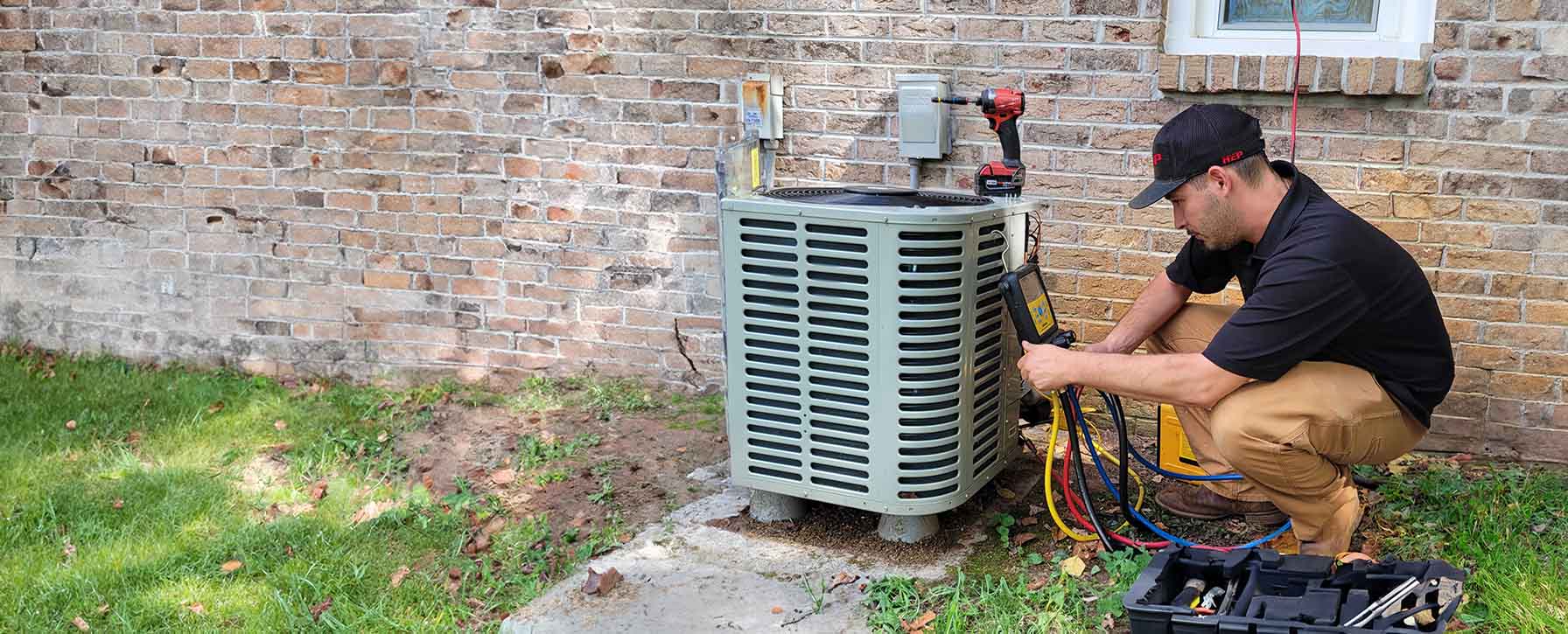

Energy Efficiency
Your trusted partner for professional home services. Quality workmanship, guaranteed satisfaction.




- HEP
- Energy Efficiency
Energy Efficiency | Ventilation and Air Quality | Heating and Air Conditioning | Altamont
Looking for a smarter way to stay comfortable through Altamont’s temperature swings? HEP’s energy-efficient heating and cooling solutions keep your utility bills in check while surrounding you with consistent, dependable comfort. Our certified technicians analyze your home’s unique layout, seal energy-wasting leaks, and install high-performance equipment that works harder without costing more.
But true comfort goes beyond temperature—it’s about healthy breathing, too. Our specialists balance airflow, remove hidden pollutants, and integrate leading-edge filtration so your home’s ventilation and air quality meet the highest standards. Schedule a visit today and discover how effortless a fresh, efficient home climate can be.
FAQs
What energy-efficient heating options are best suited for Altamont’s climate?
Altamont experiences cold, snowy winters and warm, often humid summers, so a high-efficiency, dual-fuel system is ideal. A variable-speed gas furnace (96%+ AFUE) paired with an ENERGY STAR® certified heat pump can switch automatically between electricity and gas, delivering the lowest operating cost at any outdoor temperature. For homes without natural-gas service, a cold-climate air-source heat pump or a ground-source (geothermal) heat pump provides comparable comfort with annual utility savings of 30–60% compared with older electric resistance or oil systems.
How can upgrading my HVAC system improve indoor air quality as well as energy efficiency?
Modern high-efficiency HVAC units feature tightly sealed cabinets, variable-speed blowers, and advanced filtration options (MERV-13+ or HEPA). These upgrades reduce air leaks, maintain steadier pressures, and capture more airborne contaminants. Because the blower can run at low speed continuously with very little energy draw, the system filters and mixes the air more often, diluting pollutants and balancing humidity. Adding an energy recovery ventilator (ERV) further exchanges stale indoor air with fresh outdoor air while reclaiming up to 80% of the heat or cooling that would otherwise be lost.
Are there local rebates or incentives in Altamont for installing high-efficiency HVAC equipment?
Yes. National Grid and NYSEG both offer rebate programs for Altamont residents who install ENERGY STAR certified furnaces, heat pumps, smart thermostats, and ERVs. Typical incentives range from $50 for a smart thermostat to $2,000+ for a cold-climate air-source heat pump, and geothermal systems may qualify for 30% federal tax credits plus state grants through NYSERDA’s Clean Heat Program. Always secure pre-approval and keep model numbers and AHRI certificates handy to ensure eligibility.
How often should I replace or clean my air filters to maintain efficiency and indoor air quality?
In Altamont’s mixed heating and cooling season, 1-inch disposable filters should be inspected monthly and replaced at least every 60 days. High-capacity 4- to 5-inch media filters can last 6–12 months but still need a visual check each quarter. Homes with pets, recent renovations, or allergy sufferers need more frequent changes. A clogged filter forces the blower to work harder, cutting efficiency by up to 15% and allowing dust to bypass the filter, so timely replacement is critical.
What is a heat pump and is it effective during Altamont’s cold winters?
A heat pump is an HVAC appliance that moves heat rather than generating it—providing both heating and cooling. Cold-climate, variable-speed heat pumps now operate efficiently down to ‑15 °F, thanks to enhanced refrigerants and inverter compressors. In Altamont, a properly sized system will supply 80–100% of a home’s heating load on most winter days; an integrated electric or gas backup coil handles only the coldest snaps. When replacing old oil or electric resistance heating, homeowners can save 25–50% on annual energy bills.
How does proper ventilation lower energy costs without compromising comfort?
Stale indoor air holds excess moisture and pollutants, which makes the home feel stuffy, forces longer HVAC run times, and can promote mold. Balanced ventilation systems—such as ERVs and HRVs—exhaust contaminated air while bringing in an equal amount of fresh air. Their built-in heat exchangers transfer 70–80% of the outgoing air’s heat or cooling to the incoming airstream, so your HVAC equipment expends far less energy conditioning outdoor air. As a result, you enjoy better air quality, steadier humidity, and up to 40% lower ventilation energy cost compared with exhaust-only fans.